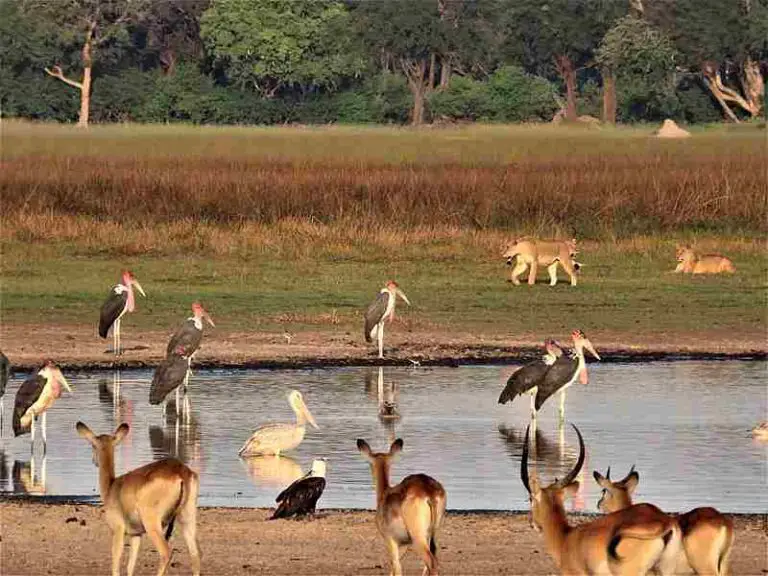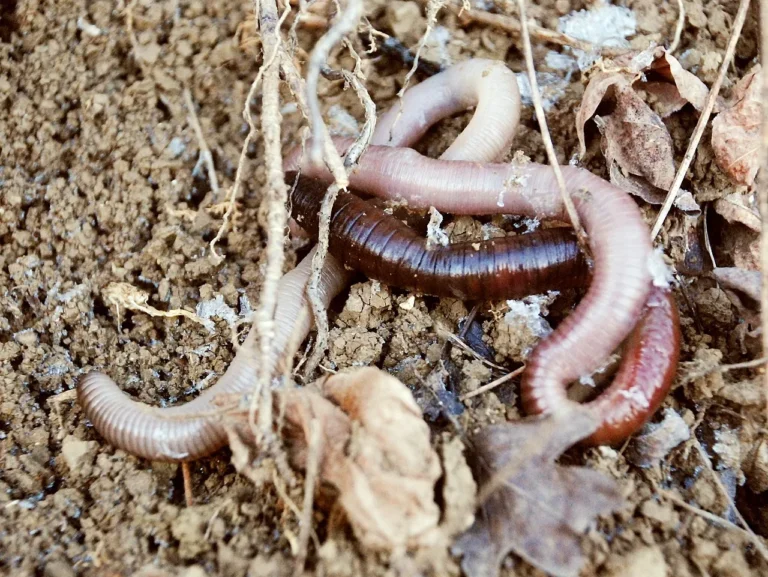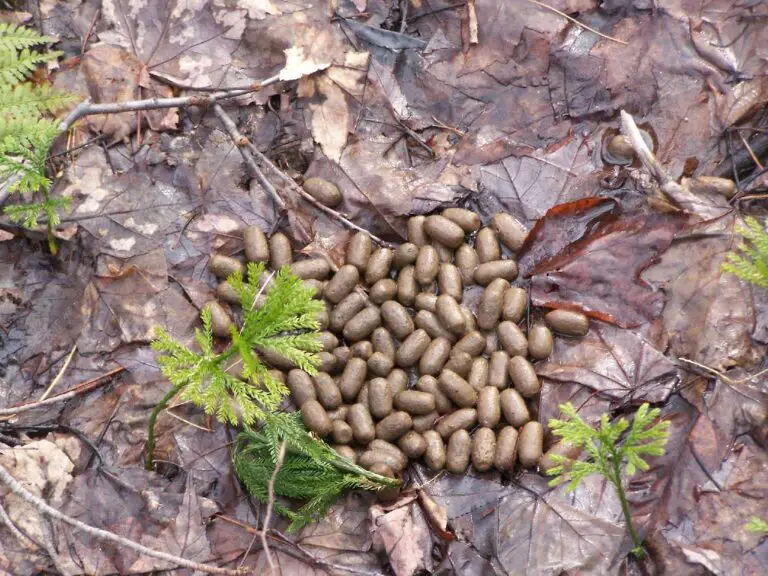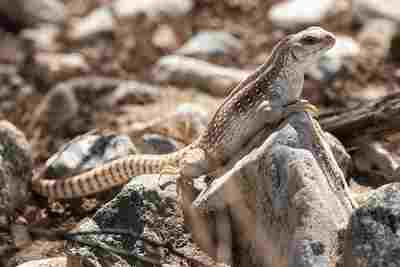Desertification Meaning, History, Types, and Affected Areas
Desertification or desertization is the process by which a land area loses its organic productivity, as a result of natural and anthropogenic factors.
While both terms can be used interchangeably, desertization is caused solely by natural factors. Desertification, on the other hand, may result from both natural and anthropogenic causes
This article discusses desertification from various perspectives, as outlined below;
-Desertification Meaning: 9 Definitions of the Concept
-Land Areas Most Affected by Desertification
Desertification Meaning: 9 Definitions of the Concept
Desertification is the transformation of fertile land due to natural and manmade constraints so that it loses its fertility and productivity.
Based on the definition above, it can be said that the development of desert conditions is a form of environmental degradation [20]. This is further expressed in the following definition;
Desertification is a form of environmental degradation that involves a decline in biochemical potency of soil in any given area.
The term ‘biochemical potency’ which is used in the above definition, refers to a number of factors and parameters that affect the biological productivity of soil. Some of these factors and parameters are mentioned below;
Desertification is the loss of biological productivity of land as a result of a decline in soil moisture and nutrient concentration as well as a change from optimal physicochemical conditions (pressure, temperature, pH) of the soil, due a combination of natural and anthropogenic factors.
So far, the definitions of the concept have made reference to the fact that it is caused by natural and anthropogenic conditions [10]. Some of the causes and effects are mentioned in the next definition;
Desertification is the degradation of land fertility and productivity due to factors such as drought, climate change and global warming; leading to a loss of the lands’ usefulness for agricultural purposes among others.
The above definition mentions that development of desert conditions can affect the agricultural usefulness of land. This is stated further as follows;
Desertification is a natural or anthropogenic process by which the ecological characteristics of land are altered such that it becomes less fertile; leading to a decrease in agricultural productivity and a risk in the risk of food insecurity.
Food security is an important topic within the context of sustainable development [5]. As a result, one of the sustainable development goals is geared toward addressing the problem of world hunger by tackling food insecurity. The link between desertification and sustainable development is expressed in the following definition;
Desertification is a the degradation of land fertility, ecology and agricultural productivity, leading to low levels of sustainability, as a result of unfavorable natural conditions and human activity.
We have seen from the above definition that ‘unfavorable human activity’ can contribute to desertification. What this implied is that there are some ‘favorable’ human activities that can prevent or mitigate this problem. Soil conservation is one of such practices [15], as stated below;
Desertification is a state of environmental degradation whereby land loses its agricultural potency or usefulness, due to a neglect of helpful practices that improve or preserve land resources, like soil conservation.
Changes in climatic conditions are common in areas where desert conditions develop [12], as the following definition implies;
Desertification is a natural or human-induced transformation of humid land areas to arid or semi-arid regions, with a corresponding decrease in biological survival and activity.
Lastly, desertification can be defined with respect to its effect(s) on the natural ecosystem, as follows;
Desertification is the result of changes in physicochemical and biological conditions within an ecosystem, such that the ecological attributes of the system no longer support high levels of organic productivity and biomass formation.
History of Desertification
Geologic evidence implies that desertification is a prehistoric phenomenon [13].
Regions with evidence of historical desert development patterns include China, the Mediterranean, and Mesopotamia [6].
In ancient times, the development of desert conditions was mainly a result of natural factors such as drought and prolonged periods of high atmospheric temperature. Anthropogenic causes during this period included agricultural practices like livestock farming, where livestock overgrazing exposed lands to degradation in regions like northwest China.
Some records suggest that these events led to significant economic and social challenges in various civilizations.
With the onset of the industrial revolution, human-influenced changes to the weather and climate became more significant [18], in the form of heatwave events, climate change and global warming. Human activities which contributed to these changes include mining and exploration, agriculture, building construction, commerce and industry.
In the 1930s, severe and rapid development of desert conditions led to loss of farmlands and socioeconomic problems in the Great Plains area of the United States [11].
Observations and studies surrounding human-induced desert development commenced after the onset of industrialization around the world. As a result of these studies, the French ecologists Aubréville and Lavauden, introduced the term ‘desertification’ in 1949 [21] to describe the degradation of land and spread of arid or semi-arid conditions in various regions.
One of the researchers who extensively analyzed desert development patterns in the twentieth century was Stebbing [4], who assessed the phenomenon in parts of Africa in the 1930s. His observations and conclusions regarding the trend of desert encroachment and land degradation was corroborated by researchers in other parts of the world like Asia and North America.
Projections by independent scholars and corporate organizations like the UN, suggest that the current rate of desert development across the world is 30 to 35 times more than the rate before the onset of industrialization [17].
It is also estimated that large-scale population-displacement will become more common as a result of desertification.
Types of Desertification
The types of desertification are natural, anthropogenic, mild, moderate, severe, and extreme/very severe categories. These are classified and distinguished based on factors such as the causes and the degree of severity.
-Types Based on Causes
1). Natural Desertification
Natural desertification as the term implies, is development of desert conditions which is caused solely by natural factors.
Climatic variation is the main cause of this type, where this variation is not influenced by any form of human activity. Loss of vegetative cover due to pests and diseases, or unfavorable weather/climate is another natural cause of .
Natural development of desert conditions is typically less severe than the anthropogenic type, and may be temporary, since natural conditions are likely to return to a state of equilibrium.
2). Anthropogenic Desertification
Anthropogenic desertification is the more common and noticeable type.
It results from human activities such as mining, commerce and agriculture, and occurs when these activities cause a shift in the physicochemical equilibrium of the natural environment.
Greenhouse emissions and the release of toxins during human-induced processes may cause environmental degradation, climate change and global warming, all of which may negatively impact the biological productivity of land.
In some cases, excessive renewable energy usage in the form of biofuel can cause development of desert conditions, by removing soil cover and exposing land to unfavorable conditions.
-Types Based on Degree of Severity
3). Mild
Mild or slight desertification has the least degree of severity. Its characteristics often indicate the onset of a more severe form.
In this type, the land experiences minor yet noticeable and measurable degradation, whereby biological productivity decreases by 1-9 percent (less than 10%) [7].
The indications of mild development of desert conditions include slight changes in soil texture, nutrient concentration and moisture content, as well as in vegetation growth rate. It could be the result of natural causes like spontaneous changes in climatic conditions, and may or may not be permanent. This implies that it is relatively easy to reverse by the use of environmental remediation measures such soil conservation and biological augmentation.

4). Moderate
Moderate desertification is a type of desert development whereby soil biological productivity decreases by 10 to 25 percent.
Other characteristics of moderate type are; a loss of 25-75% of top soil; and a climax (stable, equilibrium) species proportion of 26-50 percent for plant populations [3].
Development of moderate desert conditions is slightly more severe than the mild type, and is mostly caused by human-induced (anthropogenic) factors, although natural factors may cause this type in rare cases. It is reversible through remediation although not as easily as mild desertification.

5). Severe
Severe desertification is a type of desertification whereby 25 to 50 percent of soil productivity is lost [2].
It can also be described as a type desert development which results in a removal of up to 85 percent of top soil, and a remainder of only 10-25 percent of climax plant species.
In many cases of severe development of desert conditions, over 50 percent of soil productivity and crop yield is lost.
The primary cause of this phenomenon is anthropogenic activity and human-induced environmental degradation.

6). Extreme/Very Severe
Extreme or very severe desertification is a type of desertification whereby the soil loses more than 50 percent of its biological productivity.
In very severe type, climax plant species reduce to less than 10% [1]. Typical desert features like dunes are very likely to occur in areas affected by this type of desertification.
Human activity is the main cause. Severe development of desert conditions also involves environmental pollution and significant decline in food production.

Land Areas Most Affected by Desertification
The areas affected most by (or most susceptible to) spontaneous desert development include pastoral lands, deforested lands, irrigated lands and areas experiencing irregular rainfall.
1). Pastoral Lands
Pastoral lands are used for intensive livestock grazing in various parts of the world [19].
There are some potential effects of pastoral farming that increase the risk of development of desert conditions. These include soil compaction as a result of trampling, and overgrazing [14].
Soil compaction reduces permeability, destroys soil structure and affects moisture content. These effects make the soil more prone to alteration under the influence of environmental changes.
Overgrazing removes vegetative cover from the soil, increasing the risk of erosion and leaching. Absence of vegetative cover also reduces the frequency of biological processes like biodegradation, which are needed to boost soil productivity.
2). Deforested Lands
Deforestation and desertification are similar in terms of their relationship to anthropogenic activities and climatic conditions [9].
Deforested lands usually occur as a result of the demand for bio-energy or expansion of human settlement.
In woodlands or forest ecosystems, the removal of trees during deforestation can expose the land to more dryness and heat (since the weather-modifying and soil-covering functions of plants become absent), increasing the risk of desertification.
Desertification as a result of deforestation is common in developing parts of the world such as Africa. When biofuel from woodlands and forests is burnt to release energy, the greenhouse gases and pollutants which are released into the atmosphere may negatively impact the climate, further contributing to desertification.
3). Irrigated Lands
Water used to irrigate agricultural land is usually rich in dissolved salts, relative to pure or distilled water such as that which is produced during natural precipitation.
When irrigation is performed extensively over a prolonged period of time, as a means of watering agricultural land, the risk of precipitation and accumulation of these salts in soil increases [16].
High soil salinity causes desertification by destroying living cells in microbes, soil organisms and plant roots, making it impossible for these important biotic components of the soil ecosystem to survive.
Irrigation-induced desertification is relatively common in parts of North America and Asia. It also occurs in parts of Africa such as Egypt [8].
4). Areas with Irregular Rainfall Patterns
Irregular rainfall patterns imply that the land is exposed to degradation for prolonged period of time annually.
Also, when rainfall is erratic, soil structure and biochemical composition do not have much time to stabilize, making the soil vulnerable.
Such problems could be even more severe when the soil is cultivated, as the periods of exposure after harvest can lead to severe erosion, leaching and desertification.
Studies suggest that erratic rainfall patterns and fluctuating weather are major causes of desertification and declining crop yields in the northern part of Nigeria [2].
Conclusion
Desertification is a form of environmental degradation whereby land loses its fertility and biological productivity as a result of natural and anthropogenic factors.
It is a prehistoric phenomenon which is known to have occurred before the era of industrialization, mainly due to natural causes. The period following the industrial era has seen a rise in the prominence and prevalence of human-induced development of desert conditions as a result of mining, agriculture and commerce.
The six (6) types of desertification are;
- Natural
- Anthropogenic
- Mild
- Moderate
- Severe
- Extreme/Very Severe
These are distinguished based on differences in their causes and severity.
The unwanted development of desert conditions is a major concern in many continents of the world including Africa, Asia, Europe and North America.
Areas which are most affected include;
- Pastoral Lands
- Deforested Lands
- Irrigated Lands
- Areas with Irregular Rainfall Patterns
References
1). Abdelaziz, A. A. B. (2015). “Effect of Some Management Practices on Decertified Rangelands at Sinnar State, Sudan.” Environmental Science. Available at: https://www.semanticscholar.org/paper/Effect-of-Some-Management-Practices-on-Desertified-Abdelaziz/7b2445d52c1b6b247727c89aea2aa3dc3d93f3a2#citing-papers. (Accessed 23 June 2022).
2). Audu, I. A.; Linus, A. (2018). “Desertification in Northern Nigeria: Causes and Consequences.” Available at: https://www.researchgate.net/publication/354423993_Desertification_in_Northern_Nigeria_Causes_and_Consequences. (Accessed 22 June 2022).
3). Azare, I. M.; Abdullahi, M. S.; Adebayo, A. A.; Dantata, I. J.; Duala, T. (2020). “Deforestation, desert encroachment, climate change and agricultural production in the Sudano-Sahelian Region of Nigeria.” Journal of Applied Sciences and Environmental Management 24(1):127. Available at: https://doi.org/10.4314/jasem.v24i1.18. (Accessed 23 June 2022).
4). Batterbury, S.; Warren, A. (2001). “Desertification.” Available at: https://doi.org/10.1016/B0-08-043076-7/04172-3. (Accessed 22 June 2022).
5). Bazgă, B. (2015). “Food Security Component of Sustainable Development – Prospects and Challenges in the Next Decade.” Procedia Economics and Finance 32:1075-1082. Available at: https://doi.org/10.1016/S2212-5671(15)01570-1. (Accessed 22 June 2022).
6). Dregne, H. E. (1977). “Desertification of Arid Lands.” Economic Geography Vol. 53, No. 4, The Human Face of Desertification, pp. 322-331 (10 pages). Available at: https://doi.org/10.2307/142969. (Accessed 22 June 2022).
7). Dregne, H.E.; Chou, N.T. (1992). “Global desertification: Dimensions and costs.” In: Degradation and Restoration of Arid Lands (Ed., Dregne, H.E.), Texas Tech. University, Lubbock. pp. 249-281. Available at: http://www.ciesin.columbia.edu/docs/002-186/002-186.html. (Accessed 22 June 2022).
8). Gad, A.; Abdel, S. (2000). “Study on desertification of irrigated arable lands in Egypt.” Available at: https://www.researchgate.net/publication/292031241_Study_on_desertification_of_irrigated_arable_lands_in_Egypt. (Accessed 22 June 2022).
9). Gebremarian, T. M.; Ping, F. (2021). “Assessment of Deforestation and Desertification Induced Impacts on Ecosystem Services in Eritrea.” International Journal of Scientific and Research Publications (IJSRP) 11(3):18-29. Available at: https://doi.org/10.29322/IJSRP.11.03.2021.p11104. (Accessed 22 June 2022).
10). Ghrefat, H. A. (2011). “Causes, impacts, extent, and control of desertification.” Available at: https://www.researchgate.net/publication/287849029_Causes_impacts_extent_and_control_of_desertification. (Accessed 22 June 2022).
11). Gill, T. E.; Lee, J. A. (2006). “A Critical Evaluation of the Dust Bowl and its Causes.” Available at: https://www.researchgate.net/publication/234191648_A_Critical_Evaluation_of_the_Dust_Bowl_and_its_Causes. (Accessed 22 June 2022).
12). Grainger, A.; Smith, M. S.; Squires. V. R.; Glenn, E. (2000). “Desertification and climate change: The case for greater convergence.” Mitigation and Adaptation Strategies for Global Change 5(4):361-377. Available at: https://doi.org/10.1023/A:1026537621437. (Accessed 22 June 2022).
13). Henry, D.; Cordova, C. E.; Portillo, M.; Albert, R. M.; DeWitt, R.; Emery-Barbier, A. (2017). “Blame it on the goats? Desertification in the Near East during the Holocene.” The Holocene 27(5):625-637. Available at: https://doi.org/10.1177/0959683616670470. (Accessed 22 June 2022).
14). Ibañez, J.; Martinez, J.; Schnabel, S. (2007). “Desertification due to overgrazing in a dynamic commercial livestock–grass–soil system.” Ecological Modelling 205(3):277-288. Available at: https://doi.org/10.1016/j.ecolmodel.2007.02.024. (Accessed 22 June 2022).
15). Nejad, A. N. (2013). “Soil and Water Conservation for Desertification Control in Iran.” Combating Desertification in Asia, Africa and the Middle East (pp.377-400). Available at: https://doi.org/10.1007/978-94-007-6652-5_18. (Accessed 22 June 2022).
16). Rastgoo, M.; Hasanfard, A. (2021). “Desertification in Agricultural Lands: Approaches to Mitigation”, in Y. Zhu, Q. Luo, Y. Liu (eds.), Deserts and Desertification, IntechOpen, London. Available at: https://doi.org/10.5772/intechopen.98795. (Accessed 23 June 2022).
17). United Nations (2011). “High-Level Meeting on Addressing Desertification, Land Degradation and Drought in the Context of Sustainable Development and Poverty Eradication : note / by the Secretary-General.” Available at: https://digitallibrary.un.org/record/706202. (Accessed 22 June 2022).
18). Wandana, S.; Arachchige, U.; Preethika, P.; Wadanambi, R.; Chathumini, L.; Dassanayake, N. (2020). “The effects of industrialization on climate change.” Available at: https://www.researchgate.net/publication/344479407_The_effects_of_industrialization_on_climate_change. (Accessed 22 June 2022).
19). Weber, K.; Horst, S. (2011). “Desertification and livestock grazing: The roles of sedentarization, mobility and rest.” Pastoralism Research Policy and Practice 1(1). Available at: https://doi.org/10.1186/2041-7136-1-19. (Accessed 22 June 2022).
20). Whitford, W. G.; Duval, B. D. (2020). “Desertification.” Ecology of Desert Systems, 317-395. Available at: https://www.sciencedirect.com/book/9780128150559/ecology-of-desert-systems. (Accessed 22 June 2022).
21). Wu, J. (2001). “Desertification.” Available at: https://www.researchgate.net/publication/260408132_Desertification. (Accessed 22 June 2022).





